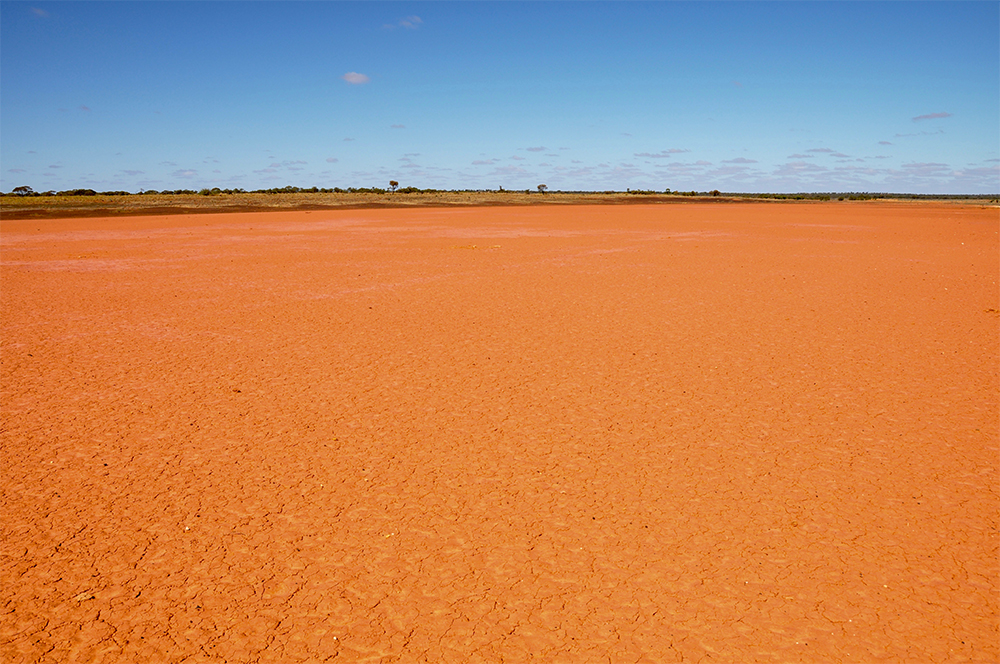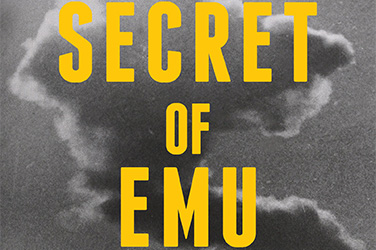
- Free Article: No
- Contents Category: Australian History
- Review Article: Yes
- Article Title: Lord of the flies
- Article Subtitle: Britain’s infamous atomic tests
- Online Only: No
- Custom Highlight Text:
In 1953, the British government conducted the Totem nuclear weaponry tests at Emu Field in South Australia. It was an inhospitable environment for non-Indigenous visitors. One London-based administrator called for the Australian military to remove all flies from the site. These tests earned part of a chapter in Elizabeth Tynan’s award-winning Atomic Thunder: The Maralinga story (reviewed by Danielle Clode in the March 2017 issue of ABR). Now Tynan has expanded the Totem story into a book that purports to uncover the secrets of what happened there and why.
- Article Hero Image (920px wide):

- Featured Image (400px * 250px):

- Alt Tag (Featured Image): Michael Winkler reviews 'The Secret of Emu Field: Britain’s forgotten atomic tests in Australia' by Elizabeth Tynan
- Book 1 Title: The Secret of Emu Field
- Book 1 Subtitle: Britain’s forgotten atomic tests in Australia
- Book 1 Biblio: NewSouth, $34.99 pb, 360 pp
- Book 1 Readings Link: booktopia.kh4ffx.net/jW4WGe
This task was made more difficult in 2018 when many previously accessible files on atomic testing in Australia were withdrawn by the UK Ministry of Defence without explanation. As with the British refusal to release the ‘Palace Letters’ pertinent to the dismissal of the Whitlam government, the ongoing denial of access to records central to an understanding of this country’s history is deplorable. Tynan asserts that it ‘represents the very worst impulses of the British government, to control, deny and cover up its activities, even retrospectively and in relation to Australian territory’.
Emu Field is a vast clay pan approximately 250 kilometres west of Coober Pedy. The traditional custodians are Pitjantjatjara, Yankunytjatjara, and Antakirinja. In 1953, the Totem team established a camp for 300 men which was abandoned before the year ended. As with all of the British nuclear tests conducted in Australia between 1952 and 1963, this was contemptuous colonialism writ large. Contempt for Australia’s sovereignty, contempt for the Australian scientists who were pushed to the sidelines, contempt for the land on which the tests were conducted, and utter contempt for Anangu and other Indigenous people who belonged to that Country.
With a badly bruised postwar economy, the Churchill government was seeking a bargain-basement bomb capable of wreaking death and damage in a cost-effective manner. When initial plans to undertake nuclear testing in Canada were spurned, Robert Menzies, Australia’s Anglophile prime minister, stepped in with a location and funding. Despite this largesse, local scientists were kept away from the inner sanctum, with the exception of Staffordshire-born Ernest Titterton who had only taken up a post in Canberra in 1950 and was a notional Australian at best. Australia paid at least £134,000 towards the cost of the Emu Field tests, while having no say in how those tests were carried out. It made Menzies’ pig iron deal look shrewd by comparison.
Tynan despairs at the harm caused in pursuit of technology that was soon to become obsolete, describing ‘aggressive atomic colonialism that intruded into central Australia and left behind residues and fears for these people and their descendants’. She marries depth and deftness in presenting the political and scientific context. The British quest for cheaper nuclear options meant experimentation with bombs containing suboptimal materials: specifically, higher than desirable proportions of plutonium-240, a more unpredictable substance than the preferred plutonium-239.
Depicting tests that generated heat greater than the temperatures on the surface of the sun, Tynan presents vivid narrative details: steel bomb towers atomised in the blast; beads of glittering trinitite spontaneously created through superheating of the soil and limestone; fake heads stuck on tall poles at set distances from ground zero to measure lethality. Her description of a military plane repeatedly flying through the mushroom cloud after Totem 1 – a cloud-sampling exercise grimly codenamed Operation Hot Box – is terrifying.
Totem 1 occurred when conditions were unsuitable, according to Australian meteorologists and the project’s own guidelines. Following this explosion, a sinister dark mist rolled across settlements at Marla Bore, Mintabie, Opal Field, Wallatinna, and Granite Downs. Anangu leader Yami Lester was at Wallatinna. ‘Five days after the black cloud came, the old people started dying,’ he said. After Lester’s story was reported in the Adelaide Advertiser in 1980, Titterton responded:
No such thing can possibly occur, I don’t know of any black mists ... The radioactive cloud is in fact at 30,000 feet, not at ground level. And it’s not black ... if you investigate black mist, sure you’re going to get into an area where mystique is the central feature and you’ll never be able to establish or not.
Asked if he would support an investigation into the black mist stories, he answered, ‘No that would be a complete waste of money and time.’ Given that Tynan describes Titterton as ‘ostensibly a British stooge’, it is a surprising act of generosity that she does not include these damning quotes recorded by the Royal Commission into British Nuclear Tests in Australia.
While the book stands alone, it is best read in conjunction with Atomic Thunder. For example, the Sydney Morning Herald report that ‘several of the observers noted the face of an Australian aboriginal (sic) formed by the soaring flames’ is retailed in The Secret of Emu Field, but only gains context when cross-referenced with the claim in Atomic Thunder that this Polonius-like cloud personification was planted in credulous journalistic minds by a surveyor nicknamed Old Luke.
What about the titular secret? There are several, including the nature of the second explosive and the politics behind Australia’s involvement, but the largest and most contentious relates to whether the Totem tests killed local people. Tynan’s argument is that the British, inadvertently or not, ‘experimented’ on the local Aboriginal people. It is a serious charge. As appalling as the British actions were, given the likelihood of Indigenous death or injury from the blast or the fallout, it is difficult to see how this amounted to experimentation. She does not provide evidence of any project participants seeking out local people, Indigenous or otherwise, to assess the health impacts of the Totem blasts, surely a necessary part of any experiment. ‘Were they callous, even murderous, or just ignorant?’ Tynan asks. She reports unverified stories of bodies being buried in mass graves, and the theory of historian Heather Goodall that there may have been Indigenous people within 300 metres of the explosion. At a time when First Nations people were not included on the national census, accurate population records for remote desert regions were non-existent. So, were people killed? This is a secret that cannot be resolved by Tynan or anyone else.
Few figures in these pages emerge with their reputations enhanced, apart from Royal Commissioner Jim McClelland and petitioner Yami Lester. Tynan shows us Menzies serenading Winston Churchill to the following tune: ‘We must at all times nourish our ancient structural unity which remains the best thing in the free world.’ Soon after, she reports on Menzies writing a secret letter to the Leader of the House of Lords, addressing him by his nickname ‘Bobbety’, the sort of cloying detail that should inflame even lukewarm republicans and that bolsters the author’s assertion that this country was a ‘lapdog’ for British weapons development.
The Australian government of the day looks gormless and craven; the British government, high-handed and racist. Operation Totem was arguably more damaging to Indigenous people than any of the Maralinga tests, for little apparent gain. Tynan argues convincingly that it was ‘a largely useless dead end that had the worst consequences for those with the least power … The fact that this pristine land was so casually handed over to a foreign power to test weapons of war speaks volumes about the peculiar bonds of colonialism.’


Comments powered by CComment